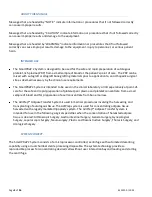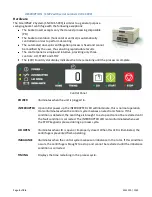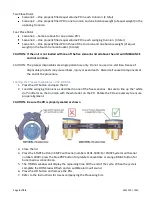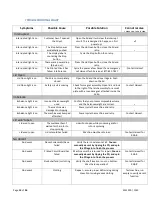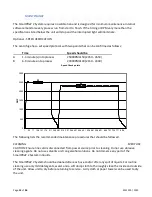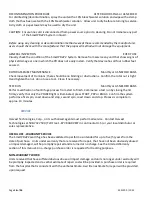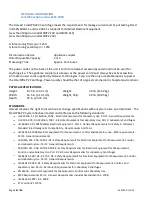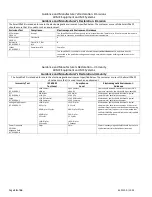
Page
11
of
26
4531200 / 1052
Risk of electrical shock, do not attempt to service electrical components; refer servicing to qualified
personnel.
Plasma, platelets and cell concentrate prepared with this system are not intended for transfusion.
Changes or modifications to this unit not expressly approved by the party responsible for compliance
could void the user's authority to operate the equipment.
BMAC Processing: The safety and effectiveness of this device for in-vivo indications for use has not
been established.
CAUTIONS
Read all instructions prior to use.
Health professionals responsible for blood collection must be trained in the practice of venipuncture
and be aware of the inherent risks. Aseptic technique, proper skin preparation and continued
protection of the venipuncture site are essential.
Bone marrow aspirate should be collected by or under the supervision of a qualified physician trained
in this procedure.
All blood and marrow components should be handled as if infectious. To minimize the potential for
exposure to blood-borne pathogens observe UNIVERSAL PRECAUTIONS when handling blood and
blood components.
Disposables that have come in contact with blood, bone marrow, or adipose tissue are to be
considered hazardous waste. Follow established hospital protocols and procedures for handling
hazardous waste including but not limited to: discard in appropriate, leak-proof container marked with
a biohazard symbol, double bag or place hazardous waste in a protective container, discard sharps in
rigid, puncture-proof and leak-proof “sharps” container. Incineration and decontamination by
autoclaving are the currently recommended methods for disposing of blood/marrow/adipose tissue
samples and blood /marrow/adipose tissue products.
Aseptic technique should be used when aspirating and dispensing fluids.
Commercially available solutions (USP, NF) or pharmacy prepared must be sterile.
Heparin-induced thrombocytopenia may occur in approximately 5% patients receiving heparin therapy.
This condition may cause hypercoagulability and may interfere with process results.
Actual performance may vary depending on operating conditions. Check sample at end of process to
confirm that fluids are properly separated. If the separation system fails for any reason, the
blood/marrow/adipose tissue should not be recovered or reprocessed by any other method.
Blood/marrow/adipose tissue should be disposed of in accordance with policies consistent with
disposal of biohazardous waste.
Report needle sticks immediately and follow established protocol. Percutaneous puncture with a
contaminated needle may lead to serious illness such as hepatitis, HIV (AIDS) or other infectious
disease. Resheathing needles is dangerous.
Do not use if the packaging is open or damaged.
DO NOT RESTERILIZE.
Disposable is single patient use only. Discard all unused components at the end of the procedure.
Re-use may lead to infection or illness/injury/death.
Separated blood/marrow products should be used within four (4) hours of collection.




